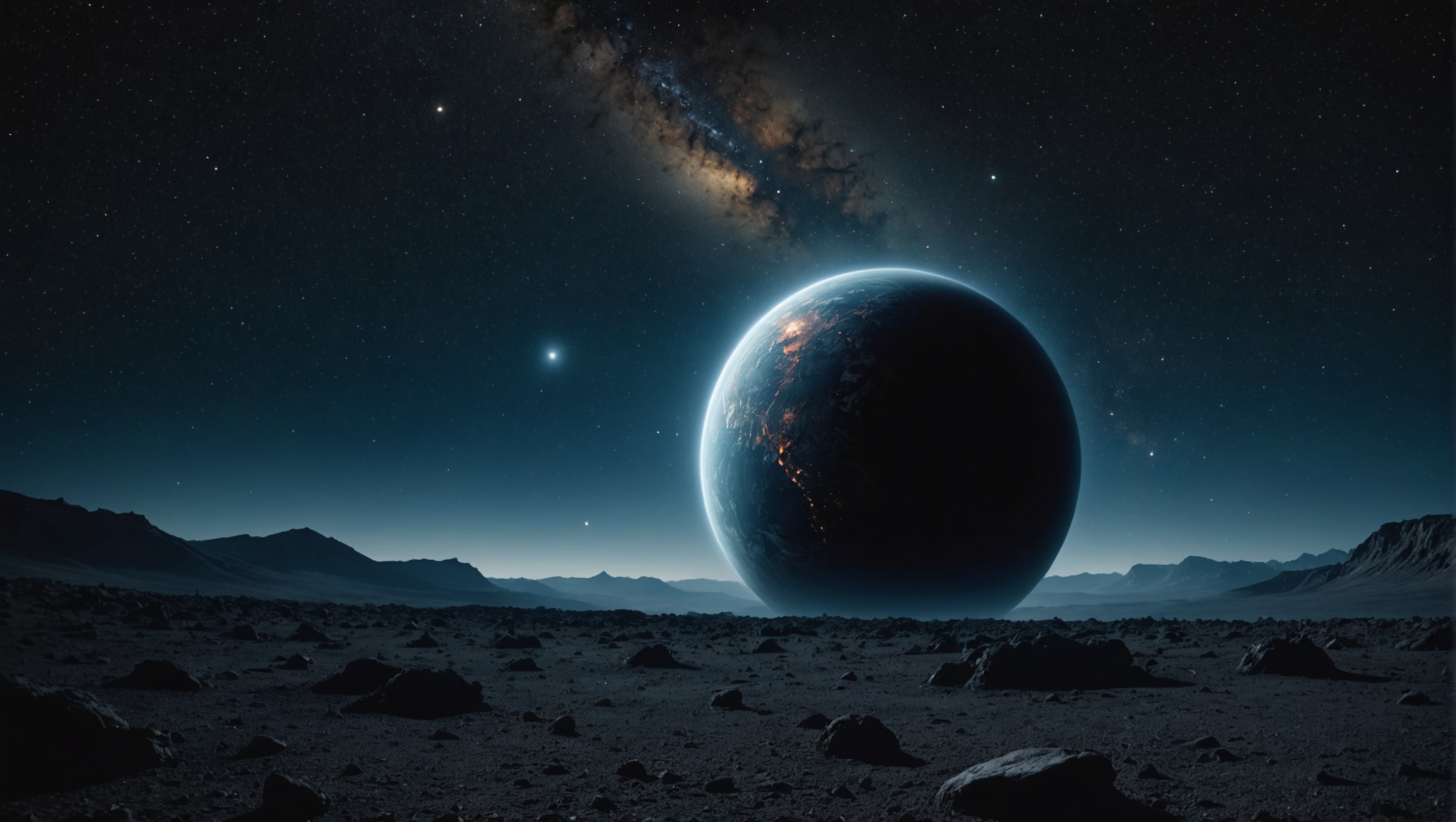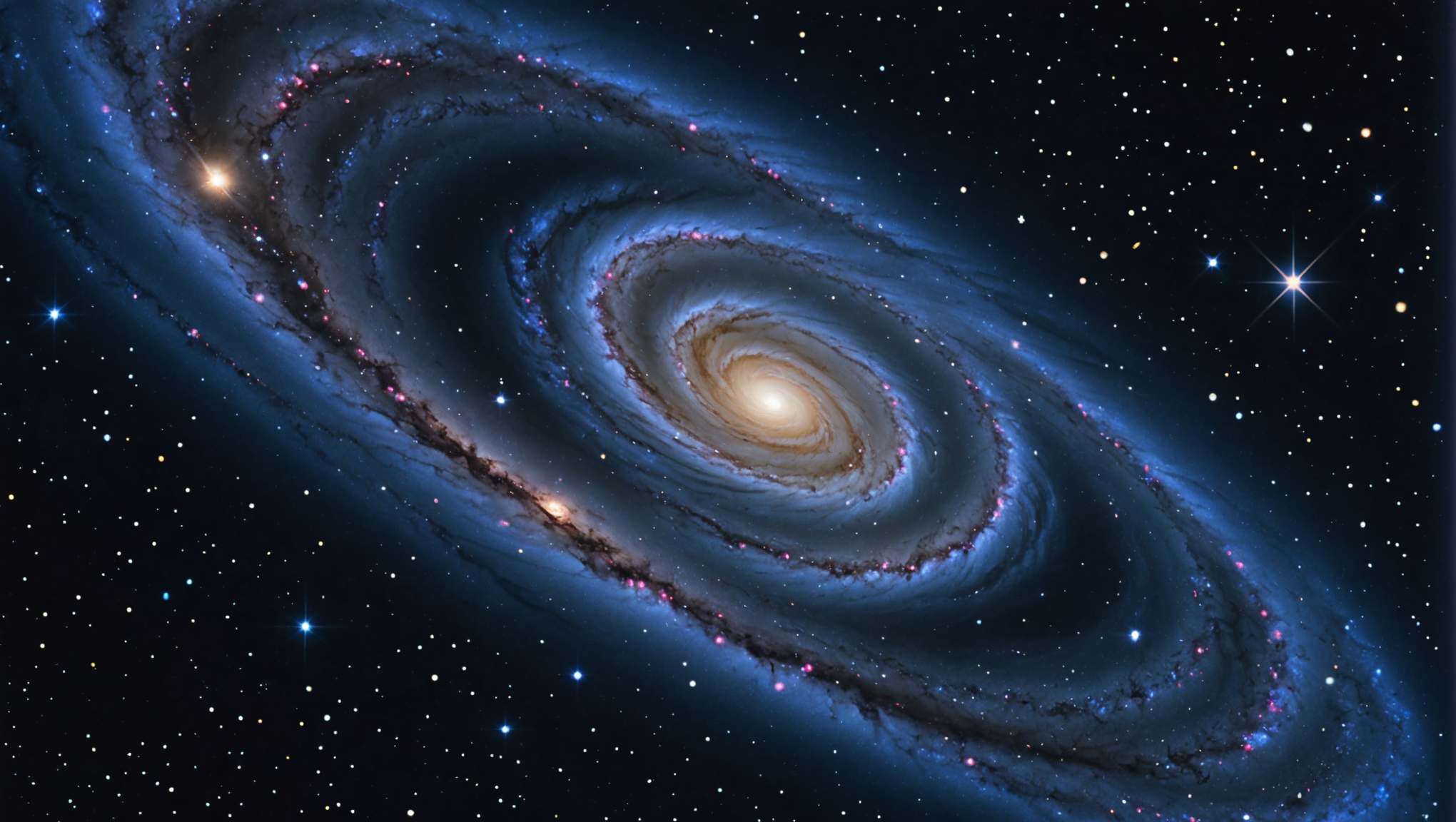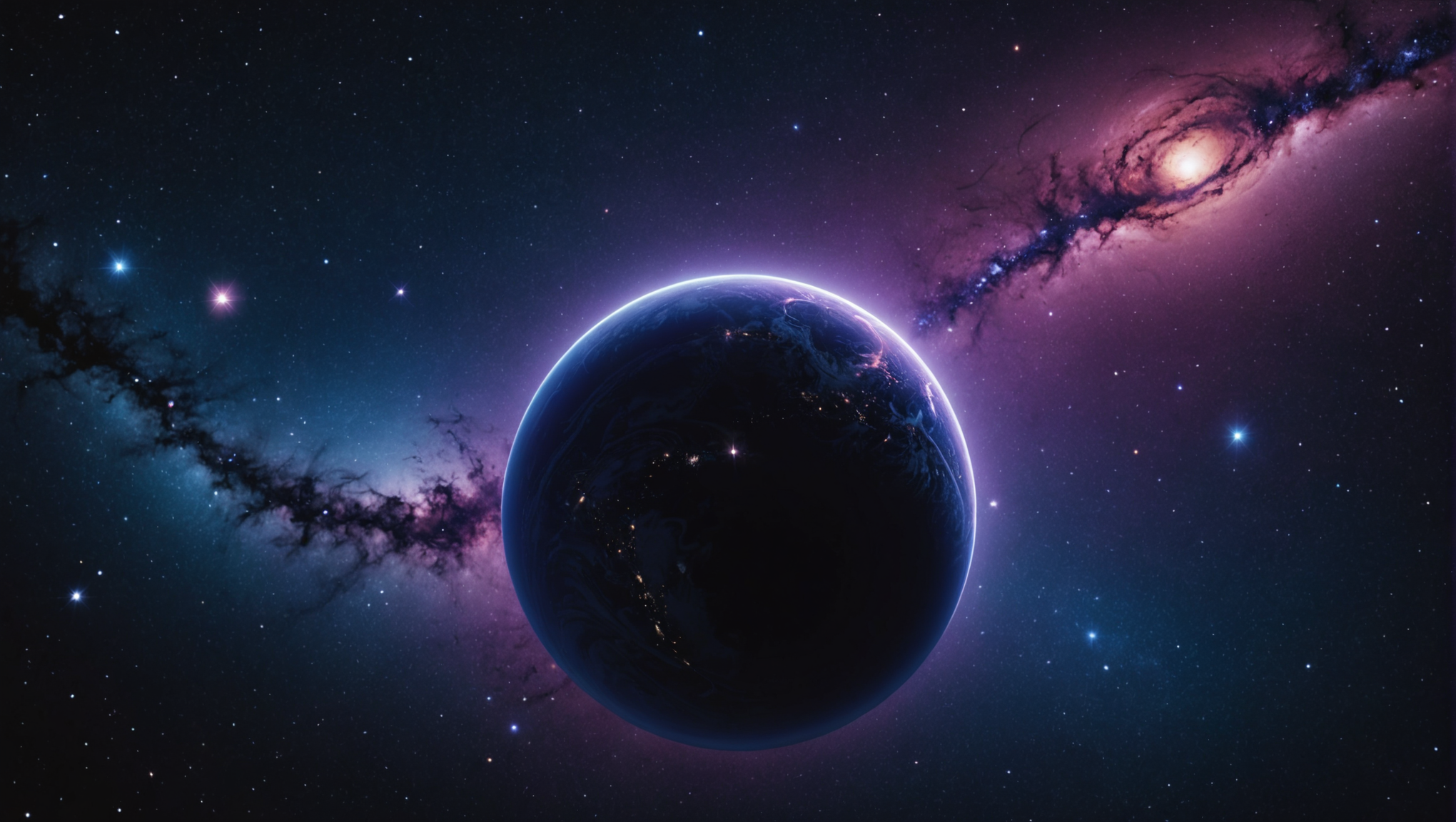Cosmic Shadows and the Dance of Forces

Unraveling the Enigma of Dark Matter and Dark Energy
Dark matter and dark energy are terms that resonate profoundly with our understanding of the universe. Although they occupy roughly 95% of the cosmos by mass-energy content, these two components remain some of the most perplexing mysteries in state-of-the-art astrophysics. Predominantly invisible, dark matter does not emit, absorb, or reflect light, making it exceptionally elusive. Its presence is surmised primarily through its gravitational effects on visible matter — such as stars, galaxies, and the cosmic web. Without the gravitational influence of dark matter, galaxies would not hold together against the relentless expansion of the universe; they would tear apart through centrifugal force as they rotate at astonishing speeds.
One of the most compelling pieces of evidence for dark matter comes from observations of galaxy rotation curves. When astronomers measure the velocities at which stars and gases orbit the center of galaxies, the data reveals a significant anomaly: stars located farther from the galactic center are traveling much faster than expected based solely on the visible mass. According to Newtonian physics, the outer stars should be moving much slower, given the insufficient visible mass to account for their speeds. This discrepancy led to the hypothesis of dark matter, an unseen mass that exerts gravitational influence and effectively holds galaxies intact.
Emerging technologies and advances in observational techniques have spurred our understanding of dark matter considerably. For instance, gravitational lensing — a phenomenon in which light from a more distant object is bent around a massive object, such as a galaxy or galaxy cluster — provides crucial visual evidence of dark matter’s presence. By analyzing how light bends and distorts, astronomers can deduce the amount and distribution of dark matter surrounding galaxies, revealing intricate patterns that constitute a vast cosmic tapestry.
Yet, while the gravitational effects of dark matter are robustly supported by observations, its actual composition remains one of the most persistent questions in astrophysics. Proposed candidates include weakly interacting massive particles (WIMPs), which are considered one of the leading explanations but have yet to be directly detected by experiments. Alternative theories, including the consideration of modified gravity on cosmic scales, further complicate our understanding. These theories posit that gravitational physics might behave differently at the extreme scales of the universe, suggesting that our grasp of gravity itself could be incomplete.
Conversely, dark energy presents an even greater enigma. Accounting for about 70% of the universe’s total energy density, dark energy acts as a force that drives the accelerated expansion of the cosmos. Observations made in the late 1990s — particularly those of supernovae — revealed startling data: the universe’s expansion is not slowing as previously thought, but rather accelerating. This acceleration implies that a mysterious repulsive force, which we term dark energy, pervades the universe, counteracting gravity’s attractive pull. The origin and nature of dark energy elude precise understanding even as its effects shape the cosmos.
One prominent hypothesis regarding dark energy is the cosmological constant, originally introduced by Albert Einstein in his equations for general relativity. This constant acts as a uniform energy density filling space and may remain constant over time. However, alternative ideas have gained traction, including the possibility that dark energy could change through time, or arise from dynamic fields known as quintessence that evolve and affect the expansion of the universe differently at various epochs.
As researchers seek to decipher the secrets of dark matter and dark energy, a myriad of observational strategies are employed. Missions like the European Space Agency’s Euclid, which aims to map the 3D distribution of dark energy and dark matter, represent a new frontier in our understanding. Similarly, experiments at places like the Large Hadron Collider continue to probe for potential dark matter candidates through high-energy particle collisions.
Crucially, the interplay between dark matter and dark energy also remains a fertile ground for investigation. They both shape the cosmic landscape but work in opposition — dark matter draws matter together, forming structures like galaxies, while dark energy drives them apart. Understanding how these two forces interact may hold the key to deeper insights regarding the universe’s ultimate fate and informing us further of large-scale structures such as superclusters.
Unraveling the enigma of dark matter and dark energy propels us into uncharted territory — a place where gravity is both a friend and adversary, where the very fabric of reality emerges from a dance of oppositional forces, and where the boundaries of our comprehension are continually tested. Each discovery brings us closer to defining not only what the universe is made of but also what lies ahead on our cosmic journey.

The Fascinating World of Rogue Planets
Imagine, if you will, a hostile universe where planets meander aimlessly through the darkness, unanchored by the gravitational embrace of a star. These rogue planets, often dubbed “orphan planets,” exist in isolation, drifting through the cold expanse of space, making them one of the most tantalizing cosmic mysteries. While their numbers are likely in the billions, our understanding of these enigmatic bodies remains decidedly sparse. Scholars suggest that rogue planets could be formed through a myriad of pathways: some may have been ejected from their parent solar systems due to chaotic gravitational interactions, while others could have formed in the cold, dark corridors between stars, born from the remnants of molecular clouds that collapsed without a guiding sun.
In stark contrast to traditional planets, which bask in the warmth of their suns and sustain atmospheres through solar radiation, rogue planets must rely on internal heat for their geophysical processes. This unique situation prompts captivating questions about their potential for hosting life. If rogue planets possess atmospheric conditions maintained by geothermal activity, could they harbor life forms that have adapted to the freeze of eternal night, driven not by the sun, but by the internal heat of their rocky cores? Such a thought stretches our definition of environments conducive to life and challenges our imagination, encouraging the scientific community to broaden its horizons while grappling with the very nature of existence in the cosmos.
The techniques employed to detect rogue planets are as illuminating as the celestial bodies themselves. One prominent method utilized by astronomers is gravitational microlensing. This phenomenon occurs when a rogue planet passes in front of a distant star, temporarily bending the light from that star due to its gravitational field. As the passage of the planet alters the view of the star, astronomers can analyze the changes in brightness to infer the presence of this elusive wanderer. Such observations have already yielded significant results in our quest to understand the frequency and characteristics of these solitary worlds.
Recent finds have underscored the existence of large quantities of rogue planets within our galaxy alone, amplifying questions about planet formation, stability, and indeed, the very nature of the cosmos itself. A leading hypothesis about their formation involves the chaotic dynamics often present in young star clusters, where burgeoning gravitational interactions can lead to the ejection of fledgling planets. A fascinating example includes PSO J318.5338−22.3990, a rogue planet that fell out of its parent system and now wanders the cosmos, giving scientists valuable insights into the myriad pathways through which celestial bodies can form.
Moreover, the increased capability of next-generation telescopes, such as the James Webb Space Telescope, is expected to yield even further discoveries regarding these intriguing planets. By detecting the faint signatures they may emit, scientists hope to uncover not just the quantities of rogue planets but also their compositions and even potential atmospheres. The inclusion of advanced technological capabilities positions us at the precipice of a deeper understanding of rogue planets, allowing for extensive surveys that could ultimately redefine our grasp of planetary systems.
But what does the existence of rogue planets tell us about the forces that shape the universe? Their presence introduces complexity into our current models of planetary formation and highlights the chaotic nature inherent in cosmic evolution. Rogue planets act as signposts to the unpredictable processes at play throughout the cosmos, reminding us that order and disorder coexist, often intricately woven into the fabric of time and space.
As the quest for knowledge in our ever-expanding universe continues, rogue planets serve as examples of the many unknowns that challenge our understanding. Caught in the vast sweep of cosmic evolution, their existence raises provocative questions: How many such planets exist? Are they unique in their own right, or do they represent a broad spectrum of solitary worlds, all with equally compelling stories? Most importantly, as we pursue exploration beyond our solar system, what potential lies in the depths of the cosmos, hidden among these cosmic wanderers?
Through ongoing research and exploration, we inch closer to answering these profound questions, ultimately revealing the diverse tapestry of our universe and the enigmas that lie within its shadows. The journey to comprehend rogue planets transcends scientific inquiry; it beckons us to contemplate our place within the grand narrative of cosmic existence, highlighting the wonder and complexity of a universe still brimming with mysteries waiting to be unveiled.

Gravitational Anomalies and Cosmic Oddities
Gravitational anomalies are perplexing phenomena that challenge our established understanding of the laws of physics. These irregularities emerge in various forms throughout the cosmos, often manifesting as unexpected variations in gravitational force that deviate from the predictions of classical theories. For instance, when astronomers observe the motion of stars within galaxies, they often find discrepancies between the observed gravitational effects and what traditional Newtonian physics would suggest. Such anomalies invite researchers to reconsider whether our models accurately encapsulate the complexities of gravitational interactions across vast cosmic scales.
The investigation of gravitational anomalies can be exemplified by the behaviors observed in spiral galaxies. When scientists meticulously measure the rotational speeds of stars at varying distances from the galactic center, the data reveals a troubling inconsistency: stars farthest from the center rotate at unexpectedly high velocities. According to conventional models, these outer stars should exhibit slower speeds due to the diminishing gravitational influence of visible mass. The resultant contradiction leads to one of the most influential theories in astrophysics: the existence of dark matter, an unseen form of mass that contributes to the gravitational pull needed to hold galaxies intact as they spin. This interaction not only underscores the role of dark matter but also shines a spotlight on the limitation of our current gravitational models.
Another striking instance of gravitational anomalies can be observed in the study of galaxy clusters. For instance, the Bullet Cluster serves as a compelling case study in this area. When two galaxy clusters collided, astronomers observed the visible mass of the clusters—primarily composed of stars and hot gas—did not correspond to the total gravitational mass inferred through gravitational lensing. This mismatch prompted scientists to propose that a significant amount of missing mass, likely composed of dark matter, resides within the clusters. Such findings reinforce our understanding that gravitational behavior in extreme environments, such as those created during galactic collisions, can yield valuable clues about the underlying structure of the universe.
Gravitational waves, ripples in the fabric of space-time generated by violent cosmic events, provide yet another layer of insight into gravitational anomalies. Their detection has opened a completely new window to understanding the interactions of massive celestial objects, such as merging black holes and neutron stars. The observation of these events directly contributes to our knowledge of how gravity behaves under extraordinary conditions. Unlike light and other forms of radiation, gravitational waves are minimally affected by intervening matter, presenting astronomers with a unique tool to gain insights into the very nature of space-time—an opportunity that invites questions about the fundamental principles of gravity itself.
State-of-the-art advancements in observational techniques have significantly enhanced our ability to study these anomalies. Instruments like the Laser Interferometer Gravitational-Wave Observatory (LIGO) and the upcoming gravitational wave detectors are designed to capture the faint signals generated by cosmic events. Through the meticulous analysis of these signals, scientists not only probe the characteristics of massive bodies in the universe but also explore the implications of gravitational physics on cosmological scales and all its intricacies.
The existence of cosmic voids presents another perspective on gravitational anomalies. These vast, empty expanses of space contain few to no galaxies, creating regions of low density between the filaments of the Cosmic web. The study of voids raises questions about how matter congregates and forms structures throughout the universe. Insights gained from analyzing these underpopulated areas can help researchers understand how gravitational forces shape the distribution of galaxies and inform models that account for cosmic evolution. They remind us that even emptiness plays a pivotal role in the overall architecture of the cosmos.
In addition, researchers are keenly interested in the relationship between gravitational anomalies and dark energy—the mysterious force behind the accelerated expansion of the universe. As we examine the interactions of matter and energy at vast scales, these anomalies help illuminate the ways dark energy may influence the fate of cosmic structures. Understanding the grand schemes through which gravity, dark matter, and dark energy interplay will ultimately lead to deeper insights into the cosmos’ evolution and structure.
As our technological capabilities evolve and new observational strategies emerge, the study of gravitational anomalies presents fertile ground for discoveries that could shake the foundations of our understanding. Each anomaly serves as a reminder that our comprehension of the universe remains a work in progress, continually evolving as we probe further into the depths of cosmic phenomena. Thus, as we navigate the complexities of these gravitational mysteries, we are not only exploring systems that defy easy classification—we are boldly traversing the uncharted waters of physical laws that govern the universe, striving to discern the intricate dance between order and chaos that shapes our reality.